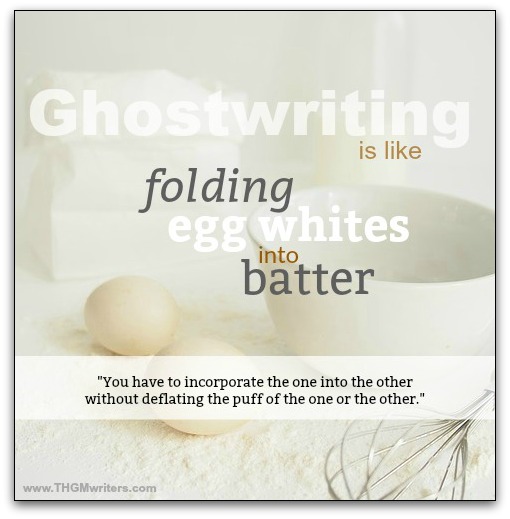How do you blend the idealist writer in you with pragmatic demands of ghostwriting? Kristin Johnson draws inspiration from none other than Julia Child.
In ghostwriting, how do you blend your own ability and insights with your client’s story and voice? You could learn from America’s greatest ghostwriter, who has a hit musical named after him.
Also, you can learn from Julia Child (we’ve already discussed in this post on how Joan Rivers can help you become a better writer), and from the movie “Julie/Julia,” starring Meryl Streep and Amy Adams.
After blogger Julie Powell sets out to cook a year’s worth of Julia Child recipes and write about it, her idol Julia pans her work.
Julie’s husband Eric (Chris Messina) says to Julie:
“Look, there’s something wrong with her if she doesn’t get what you’re doing.”
Julie replies:
“There’s nothing wrong with her. Nothing. I spent a year with her. She’s perfect. “
Eric says:
“The Julia Child in your head is perfect. The Julia Child that doesn’t understand what you’re doing is not perfect. The one in your head is the one that matters.”
As ghostwriters, we know that the idealized version of the client and the book is not necessarily the one that matters—because it is the client’s book. We can advise, we can cajole and we can subtly add our influence. There may be two clients we’re serving: the Julia in our head and the real flesh-and-blood Julia who critiques and who is human.
This doesn’t mean you check your principles, tastes, and ideas at the door. It simply means compromise. Recognize that, as we wrote in an earlier blog post, uncertainty is part of the job (and of life).
“Folding egg whites or flour or whipped cream or anything else into anything like a cake batter is an essential part of soufflé and cake making. You have to incorporate the one into the other without deflating the puff of the one or the other.”
An excellent metaphor for blending the work of writer and ghostwriter!

